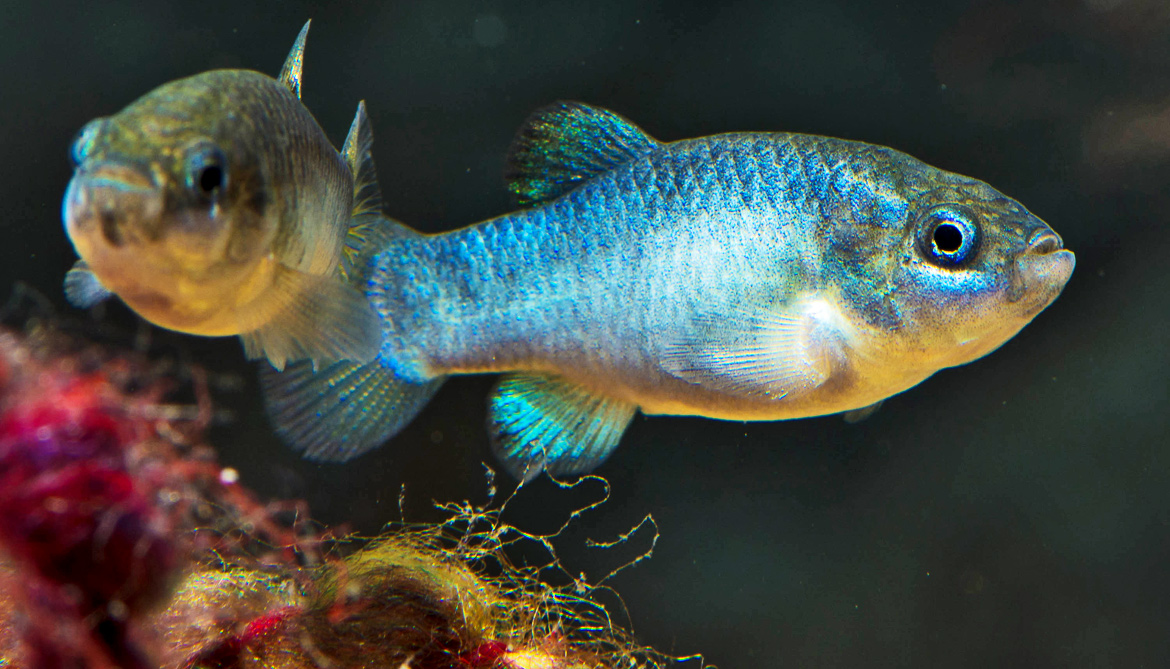

Hillyard and van Breukelen think the reason pupfish do this is because the mitochondria produce reactive oxygen species, and these reactive oxygen species damage proteins, DNA, and membranes. This means the fish are not consuming the oxygen they are bringing in, and so there is no need to increase ventilation, which is why they end up dropping into this paradoxical anaerobism. When the oxygen level is high and fish produce ethanol, it closes off the mitochondria. Ventilation in fish is driven by oxygen levels. We think this paradoxical anaerobism is almost a mistake." "They are producing some ethanol, and we think that ethanol closes down a channel in the mitochondria, where they use oxygen.

"What's really neat is how pupfish go into this paradoxical anaerobism," he said. "The question is whether the pupfish adapted to live in those warm springs, because after all, they spent all of their evolutionary history in cooler waters and there hasn't been much time to evolve," van Breukelen said. Somehow, as the lakes dried out, the fish ended up in the area's warm springs, which can be up to 35? Celsius (95? F). Those lakes were colder, under 20? Celsius (68? F). Even as recently as 2,000 years ago, the area was filled 10 meters deep with water. There were numerous lakes and Death Valley was filled with water 100 meters deep then. Some 10,000 years ago, the desert Southwest was a very different environment than it is today. Why do these fish, which are up to two inches in length and found in warm springs and spring outflows near Death Valley, go for long stretches of time without consuming oxygen? To better understand, researchers looked at the historical climate conditions of the area. The fish aren't simply holding their breath instead they are going into this anaerobic metabolism." What we didn't see is compensatory oxygen consumption. The longest continuous period of paradoxical anaerobism we observed was 149 minutes. "Some of the pupfish were able to go without breathing oxygen for up to five hours with only a couple of brief interruptions of oxygen use. "The pupfish's extended time not consuming oxygen made no sense, since oxygen is so much more efficient, and these pupfish live in an incredibly energy-deprived environment," said van Breukelen. Life scientists Frank van Breukelen and Stanley Hillyard originally wanted to measure how much oxygen the pupfish used to better understand the energy needs of the endangered species.Īs they conducted their testing, van Breukelen and Hillyard discovered the phenomenon they call paradoxical anaerobism. grandis and provide a benchmark to evaluate responses to environmental disturbances.UNLV researchers have discovered that pupfish, which are found only in the desert Southwest, can go for up to five hours with nearly no oxygen, and they do this even though oxygen is available. These findings reveal essential age and growth information for F. The parameters of the von Bertalanffy growth model were estimated as: L ∞ = 87.27 mm, k = 2.43 year −1, and t 0 = −0.022. Fundulus grandis was aged to a maximum of 2.25 years. The uncoupling of somatic and otolith growth may be primarily attributed to warm summer temperatures, which led to enhanced otolith growth while simultaneously reducing somatic growth. In contrast, mean otolith growth was significantly greater in summer (1.37 μm d −1) than winter (0.826 μm d −1). Mean somatic growth in length was significantly greater during the winter (0.085 mm d −1) than summer (0.054 mm d −1). grandis adults (49–128 mm TL) using whole sagittal otoliths and determined growth rates of recaptured individuals in winter (n = 58) and summer (n = 36) in Louisiana. By combining a tag-recapture study with a chemical marker to stain otoliths, we validated an ageing method for F. grandis, age determination methods have not been validated and little is known of its growth pattern. Despite the ecological, commercial, and scientific importance of F. Its wide distribution and high site fidelity makes it an ideal indicator species for brackish and salt marshes, which experience a variety of anthropogenic disturbances. Fundulus grandis (Baird and Girard), the Gulf Killifish, is an abundant species throughout the marshes of the northern Gulf of Mexico.


 0 kommentar(er)
0 kommentar(er)
